Published Nov 13, 2016
Restored TOS Navigation/Helm Console Ready for Spaceflight
Restored TOS Navigation/Helm Console Ready for Spaceflight
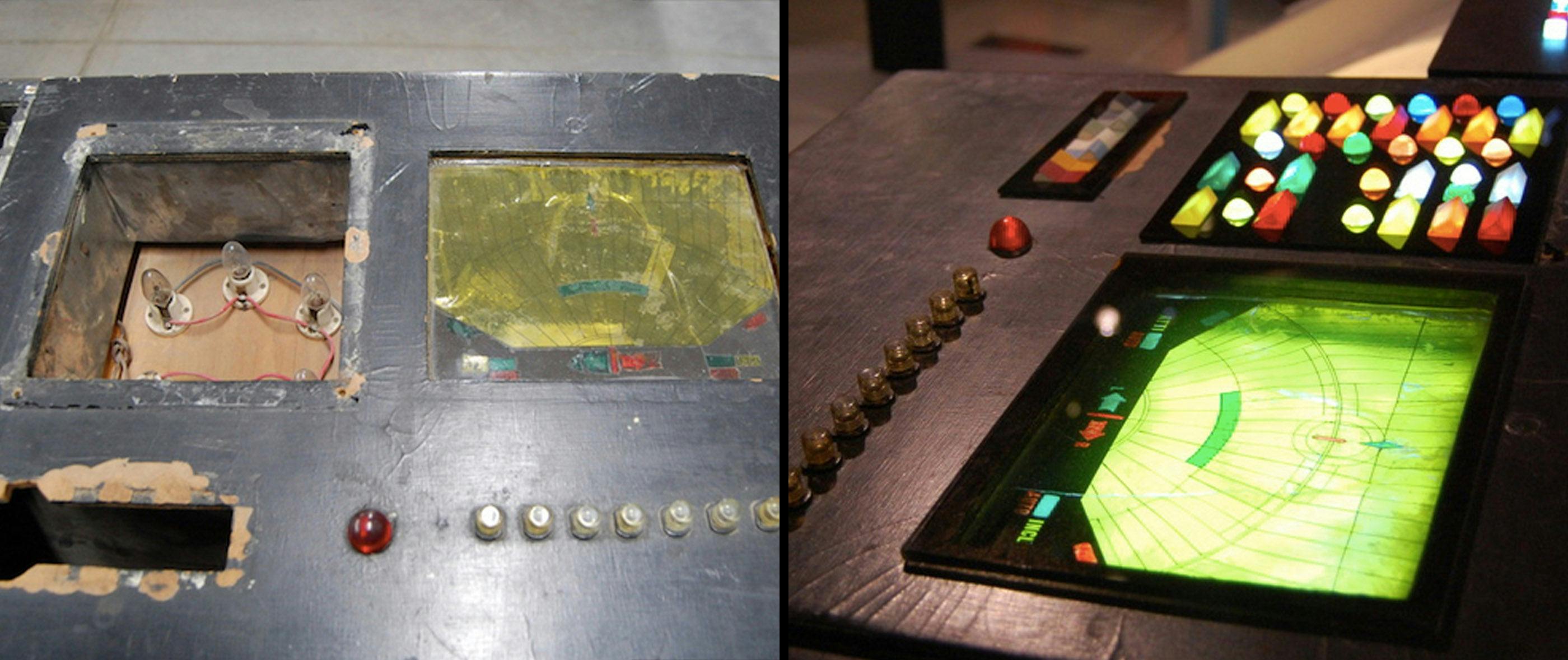
While last used to pilot the Enterprise during filming of “Turnabout Intruder” in January 1969, the iconic Navigation/Helm and Captain’s Command Chair survived in the hands of various collectors since the last frames of Star Trek: The Original Series were captured on film. Now, 47 years later, these set pieces have been brought together again for an official 50th Anniversary exhibition called “STAR TREK: Exploring New Worlds” at Seattle’s EMP Museum.
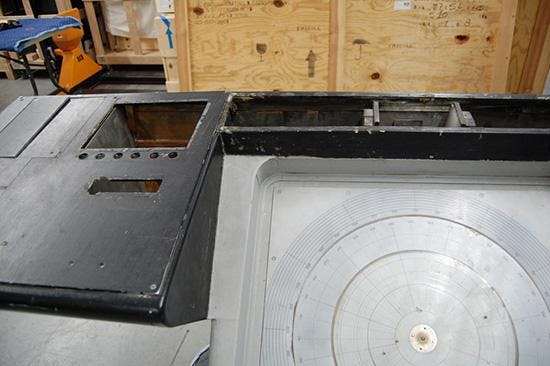
But before it could be put on exhibition, the battle-scarred Nav/Helm console needed some tender loving care. Essentially, only the shell of the console survived to 2016.
“When the console arrived from the lender it was in a sad state," says EMP Museum curator Brooks Peck, who led the team that created the EMP Star Trek exhibit. "All of the controls were gone, except for one row of lights and one ‘jelly bean’ indicator. That means the chronometer and the red alert signal were missing. We only had a few pieces of the original astrogator disc and there were gaps where there had been buttons and switches.”
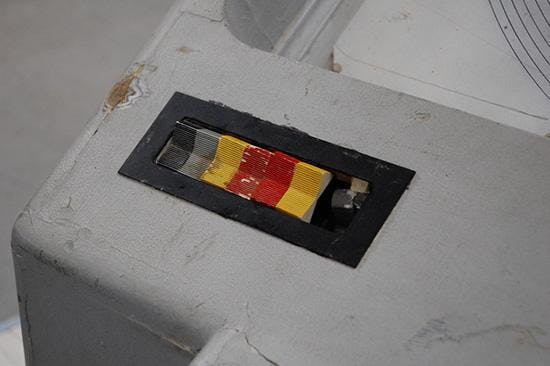
“We had some decisions to make,” Peck explains. “Should we display it as is? Or should we strip it down to the bare wood, repaint and fully restore? That was an attractive option — the idea of bringing it back to a perfect state. It would be bringing a piece of classic Star Trek back to life. But I didn’t prefer that option because that would erase or cover over much of the piece’s history. For example, there’s a quarter-sized gouge on the console that reveals all the layers of paint put on it over the years. You can see how the crew repainted it every season, putting a coat of black between each new color coat to block leaking light. I wanted to preserve that history.”
The console was structurally sound, although it appears to have been built quickly from scrap wood at the Culver Studios where “The Cage” pilot was filmed and the Enterprise Bridge was first assembled.
“I decided to leave the surface as it, scratches and all," Peck says. "For the buttons and indicators I realized that we could build reproductions with LEDs and circuitry that would take up far less space than the original equipment."

The museum reached out to Florida fan Will Smith, whose lifelong love of the series and its magnificent set pieces and props led to the creation of TOSGraphics.com – a resource for fans interested in the smallest detail of TOS set pieces.
“I asked Will if he would be able to construct those parts as separate boxes that we could just lay into the gaps and holes on the surface of the console and wire separately," Peck says. "Will and his team managed to do just that. The result brings back, in my opinion, 90% of the console’s look and magic, but completely preserves the history. None of the reproduction parts are attached in any way — they just lift out.”
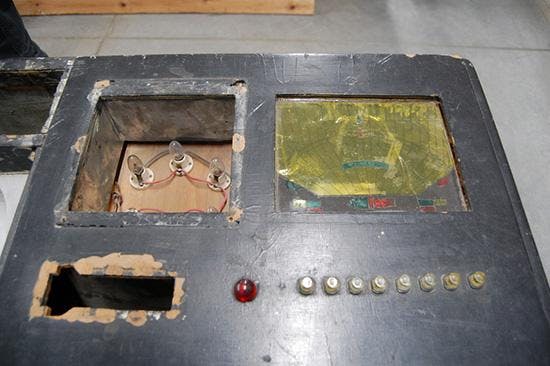
Smith has consulted with a number of fan productions.
“I knew that Will was the right person for the job on his first visit to take field measurements of the Nav/Helm console," Peck explains. "Will discovered that one aspect of a replica console was off by a quarter inch — and he was devastated. Clearly this guy is deeply, passionately committed to accuracy and quality, I realized. Will had a contagious joy about the project, and he always treated the Nav/Helm console with the utmost care and respect. He listened to my needs, offered good advice and was incredibly cooperative.”

Smith says he was prepared for the rough condition of the artifact, since it had previously been on display in other exhibitions and when it was last auctioned.
“What I was not prepared for was the surreal feeling of being next to the console," Smith notes. "It was remarkable! After the initial astonishment of being in the same room with it, our team started documenting the condition to determine the amount of work needed in order to get it ready for public display.”
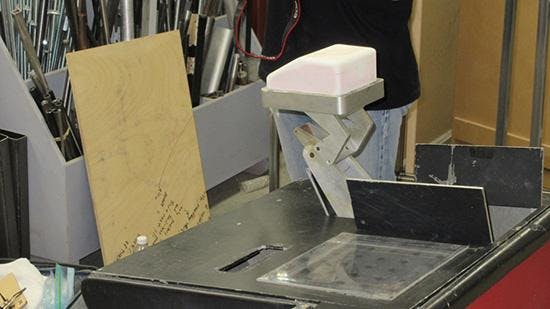
Smith has been studying the sets and props of Star Trek since the early 1970’s, copiously drawing on notebook paper from school to chart the lighting sequences on the Enterprise Bridge.
“Over the years the techniques I use have become more sophisticated and information gathering more organized," says Smith, who also consulted with Adam Schneider and the team that restored the full-size Shuttlecraft Galileo. Schneider also loaned several of his miniature Star Trek spaceship models to the museum for the exhibition. "Examination of actual set pieces has been very insightful in the understanding of the design and construction of the original series sets."
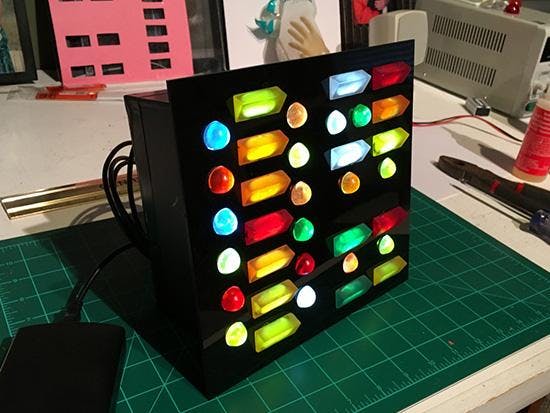
“I feel like an archaeologist making new discoveries each time I get the opportunity to see one of these pieces in person," Smith says. "First we had to determine how far and to what extent we wanted to take the restoration. We worked very closely with the EMP museum staff to determine exactly what could be done within budget. We did not want to do anything that would damage or change any part of the original console, including the worn finish. We all felt that lighting the console for the exhibition was important and would bring life to it. Most of what we did was to replace missing components that had long since disappeared.”

Existing holes in the Nav/Helm console provided clues to where missing switches and lighting had once operated. The only graphic that remained from the 1960’s was the targeting scanner at Chekov’s Navigation station. Smith had the top piece of the “Sulu scope” 3-D printed, adding to the existing scope armature that was still intact.
Resin button panels were recreated and vintage switches were installed where initially only holes remained. Replacement components were aged and weathered, with the goal of making additional components blend seamlessly with the console and not appear as new elements.
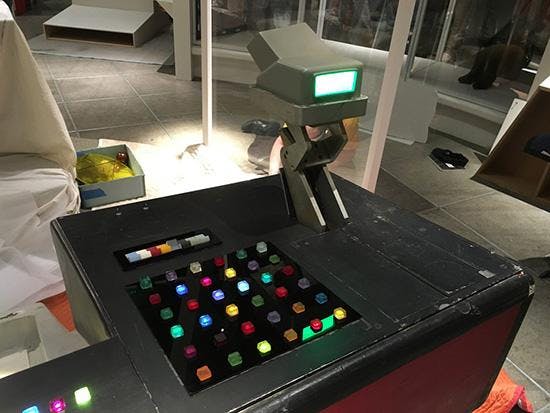
“We made the replacement modules to slip right into the openings where the originals had been, without physically attaching them to the console," Smith says. "We used all LED lighting sources so that the console could be displayed without generating excessive heat that the original incandescent lighting produced, although those ceramic fixtures are still in place inside the console. We even replicated the exact lighting patterns as seen later in the third season of TOS, in an effort to make the restoration as accurate as possible.”
Smith says he was fascinated to learn how the console was originally built and what components of the Nav/Helm console were actually found objects.
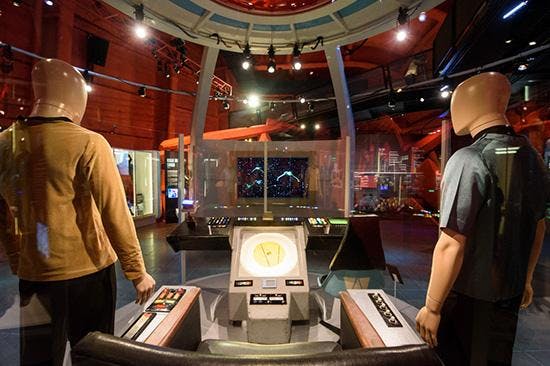
“In our investigation we literally were able to examine and measure nearly every area of the console, both inside and out," Smith says. "We could even see multiple layers of paint dating back to the first pilot. Inspecting the rising ‘Sulu scope’ scanner was amazing. The way that it was mechanically linked in order to fold into the console in incredible because it all has to disappear when not in use. Overall, being able to accurately restore the Nav/Helm console was very satisfying and I believe it is something that was long overdue. After all, these are now historical pieces. I would like to thank Brooks, the EMP and the owner of the console for allowing us to accurately restore this iconic piece to its original condition and for preserving it for future generations.”
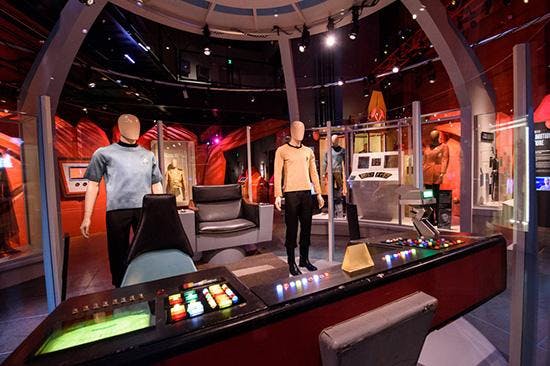
“If you come to see our exhibit, you can get right up to the Nav/Helm console – just a few inches away," Peck enthuses. "The Nav/Helm console is in a big display we sometimes call the ‘fishtank’ along with the command chair and Kirk and McCoy uniforms. You can see every nick, every brushstroke, and all of Will’s amazing work”
The EMP Museum’s “STAR TREK: Exploring New Worlds” special exhibition remains open through March 5, 2017.
Dave Arland first saw Star Trek in syndication on late-night Indianapolis TV. He owns a Central Indiana public relations and communications agency.

